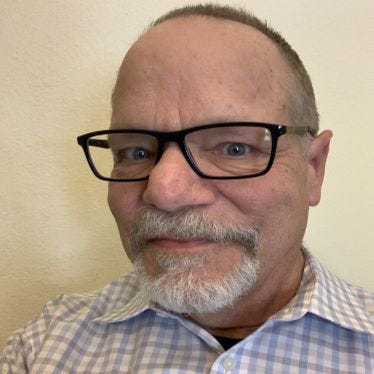Nutracon 2012: Supplementing health with omega-3sNutracon 2012: Supplementing health with omega-3s
William S. Harris, PhD, looks at how the dietary supplements industry can improve consumers' omega-3 levels without drastically impacting their diets.

 William S. Harris, PhD, is a Research Professor of Medicine at the Sanford School of Medicine, University of South Dakota; President of OmegaQuant, LLC, a lab offering blood omega-3 testing for researchers; and Senior Scientist at Health Diagnostic Laboratory, the first major clinical laboratory to offer omega-3 blood testing for cardiovascular risk assessment. He has been doing research in omega-3 fatty acids for more than 30 years.
William S. Harris, PhD, is a Research Professor of Medicine at the Sanford School of Medicine, University of South Dakota; President of OmegaQuant, LLC, a lab offering blood omega-3 testing for researchers; and Senior Scientist at Health Diagnostic Laboratory, the first major clinical laboratory to offer omega-3 blood testing for cardiovascular risk assessment. He has been doing research in omega-3 fatty acids for more than 30 years.
Functional Ingredients: What’s the benefit of omega-3s supplementation for “healthy” people?
William Harris: The challenge is the word “healthy” because if they were really healthy they wouldn’t need any! In America we have a chronic deficiency in omega-3 fatty acids. The main reason we’d want to supplement is because we are only firing on five out of six cylinders because we are typically low in omega-3 levels, and how that plays out in heart disease, cognition, inflammation, etc. It’s because we don’t eat enough fish. And we don’t eat enough of the high-omega-3 fish. A lot of the fish we eat—white fish, fried fish, shrimp—are not high in omega-3s.
Fi: Is there a dosage level someone needs to shoot for to achieve benefits?
WH: For heart disease, the intake I recommend for the general population without known disease is about 500 mg of EPA and DHA a day combined in roughly equal proportions. If there is 40 percent EPA and 60 percent DHA or the reverse—as far as we know it doesn’t make any difference. The Japanese eat about a gram a day. The typical American intake is like 150 mg a day. So going from 150 up to 500 is a big step. Going up to 1,000 is huge step, so I’m trying to be a little bit realistic. And there is good data that 500 mg a day reduces risk of cardiac events.
Fi: How do you measure omega-3 levels in the blood?
WH: We use a measure called the omega-3 index, which we measure in the cell membranes of red blood cells. It’s the EPA plus DHA content in the cell membrane. It’s expressed as a percentage. A typical American might be at four to five percent, meaning about four to five percent of the fatty acids in the cell membrane are EPA or DHA. The Japanese are running about nine to 10 percent. We think a healthy target is about eight percent. If you take fish oil pills or eat the same amount of omega-3s from fish there is the same difference in the omega-3 index. We don’t think there is any difference in how you get the omega-3s. Food first is the usual mantra. But you’ve got to be real, too. Some people just won’t [eat fish].
Fi: Is krill oil a more bioactive form of omega-3s?
WH: We don’t really know gram for gram whether krill oil omega-3s are any better or better absorbed than fish oil. I’ve seen a couple of studies that looked like you might get an increased blood level of EPA and DHA per unit of omega-3s fed with krill oil. But if you say it’s 50 percent higher and you’re paying 500 percent more—the math doesn’t work out for me. The important question is what happens with cardiac events and other diseases, and krill oil studies haven’t gone there yet. I think there has been premature promotion of the krill story for the evidence that’s out there.
Fi: Are the sustainability of omega-3s sources a big concern?
WH: Maybe for the market itself, it’s going to be a problem because prices are going to go up if we can’t find new sources.
One of the more novel sources is Monsanto’s stearidonic acid (SDA) soybean oil. Stearidonic acid is the next metabolic step up from alpha-linolenic acid (ALA) in plants. If humans eat ALA the first step [to convert it to EPA in the body] is to convert it to SDA. It’s the big bottleneck; it’s the toughest step. It’s the reason why when we eat ALA [from flax, chia or other sources] we get very little change in EPA levels. We can’t get over that hump. If you eat SDA you get a much more efficient conversion to EPA. What Monsanto has done is to bioengineer a soybean to produce an oil that has about 25 percent SDA in it. They’re going to market that next year under the name Soymega [in a partnership with Solae]. The beauty of the Soymega idea is that, in America, 70 percent of our total oil intake comes from soybeans. If they mixed this into 20 or 30 products that normally have soybean oil in them anyway, it is sort of like adding iodine to salt or folic acid to flour. It’s kind of a fortification program that will slightly lift the entire tide of the omega-3 levels in people without them having to change their eating habits. Plus it’s essentially an infinite supply—wherever you grow soybeans you can grow this stuff. So it’s an interesting approach to the problem.
Fi: What’s the future for omega-3s?
WH: I definitely think it’s on a lot of people’s radars. Not every study is positive, but very few studies are negative. There are some neutral studies. I think it is one of the most well-studied and well-documented nutrients for improving health in the West. And I think it will continue. I work with Health Diagnostic Lab that is now offering a blood omega-3s test as part of a standard medical test panel and insurance is paying for that. And doctors are now able to order that for their patients and basically treat omega-3 levels as a risk factor.
Harris will be presenting "Healthy Adults and Omega-3s" from 2:45-3:30 p.m. on Wednesday, March 7, as part of Nutracon 2012 in Anaheim, Calif. For more information, or to register for Nutracon, please visit www.nutraconference.com.
About the Author
You May Also Like





